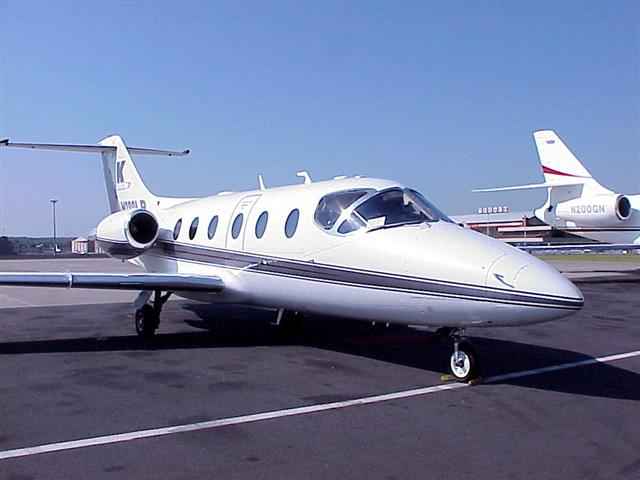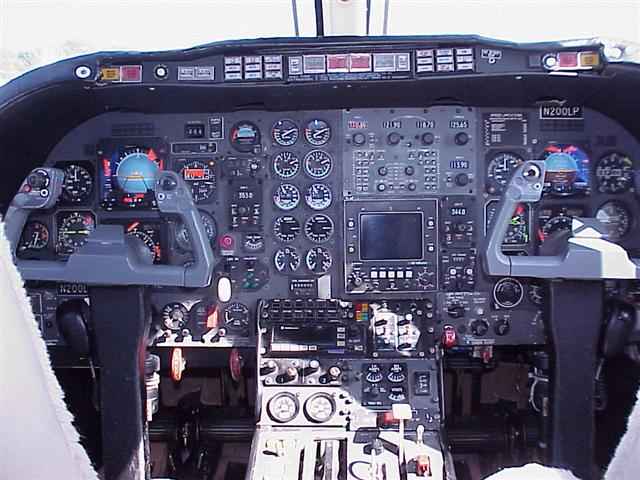


Aircraft Description
Background/History
In 1969, Mitsubishi Heavy Industries initiated an extensive program of market research to determine the demand for a small business jet. As a result of this study, Mitsubishi embarked in the mid-1970s on the development of the MU-300 Diamond, a light twin-engine, turbofan-powered corporate transport designed to compete directly with the Cessna Citation and Learjet 25. The Diamond I made its first flight in August 1978. A lengthy and difficult certification effort ensued, resulting finally in approval under FAA Part 25 in November 1981. Weight gains suffered during the certification process hampered the Diamond’s high/hot performance. The Diamond 1A featured the -4D variant of the venerable Pratt and Whitney JT15D engine, flat-rated to 25 degrees C. This allowed the aircraft to benefit from the full take-off thrust of 2,500lbs. over a wider range of conditions. The Diamond II replaced the 1A in 1985 after a production run of 70 aircraft. The Diamond II used the JT15D-5 turbofan, producing 2,900lbs. of thrust up to 27 degrees C. Only eight Diamond IIs were built before the manufacturing rights were transferred to Raytheon/Beech, who continue produce the aircraft in its most current variation as the Beechjet 400A.
Power
The Diamond 1A is powered by two Pratt and Whitney of Canada JT15D-4D turbofan engines rated at 2,500lbs of thrust each. Inspection interval on the engines is 3,500 hours.
Avionics
A typical avionics installation includes dual Collins VHF 20A comms, dual VIR 30A navs, DME, ADF, dual TDR 90 transponders, Sperry APZ 500 flight director, SPZ 900 autopilot and Primus 300SL color weather radar.
Design Features
The Diamond 1A is a twin turbofan-powered, short-to-medium range executive jet aircraft. It is configured as a cantilever low swept-wing monoplane with a pressurized, semi-monocoque fuselage. It has a T-tail section with swept vertical and horizontal stabilizers and a retractable tricycle landing gear utilizing a single wheel on each unit. The Diamond is constructed mainly of aluminum and light aerospace alloys. A small separate rudder surface above the normal rudder functions as a yaw damper. Flaps extend across nearly the entire wing trailing edge. Roll controll is primarily via spoilers, supplemented by small ailerons near the wingtips.
Accomodations
The Diamond 1A can accomodate seven to eight passengers in a cabin normally arranged with a four-place club and a side divan across form the entry door. A full-width aft lavatory has some baggage space and there is an additional rear baggage compartment accessable from the exterior. Cabin dimensions are 4.8ft. in height, 4.9ft. in width and 15.6ft. in length.
| General | Diamond IA, MU-300 | |||
|---|---|---|---|---|
| Category | Jet < 20,000 lbs. | |||
| Years Aircraft Manufactured | 1982 – 1985 | |||
| Serial Number Range | A003SA-22- A079SA-91 | |||
| Retail High Price | $1,050,000.00 / 823,935.00€ | |||
| Retail Low Price | $249,000.00 / 195,390.30€ | |||
| Characteristics | Diamond IA, MU-300 | |||
| Seating | 2 + 7/9 | |||
| Wing Loading | 60.6 | |||
| Power Loading | 2.9 | |||
| Noise(EPNdB): Takeoff/Sideline/Approach | 85.6/85.8 | |||
| External Dimensions (ft) | Diamond IA, MU-300 | |||
| External Length | 48.4 | |||
| External Height | 13.8 | |||
| External Span | 43.5 | |||
| Internal Dimensions (ft) | Diamond IA, MU-300 | |||
| Internal Length (Overall/Net Height) | 15.6 | |||
| Internal Height | 4.8 | |||
| Internal Width (Max/Floor) | 4.9 | |||
| Baggage | Diamond IA, MU-300 | |||
| External: Cu.Ft./Lb. | N/A | |||
| External: Cu.Ft./Lb. | N/A | |||
| Power | Diamond IA, MU-300 | |||
| Engines | 2 P&WC JT15D-4D | |||
| Output (lbs ea.)/Flat Rating | 2,500 | |||
| Inspection Interval | 3,500t | |||
| Data based on latest manufactured year | ||||



